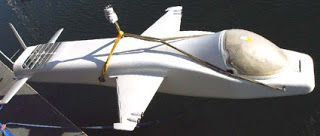Ad Support : Nano Technology Netbook Technology News Computer Software
Sylvia Earle talked about the Oceans at Techonomy.
Earle’s work has been at the frontier of deep ocean exploration for four decades. Earle has led more than 50 expeditions worldwide involving more than 6,000 hours underwater. As captain of the first all-female team to live underwater, she and her fellow scientists received a ticker-tape parade and White House reception upon their return to the surface. In 1979, Sylvia Earle walked untethered on the sea floor at a lower depth than any other woman before or since. In the 1980s she started the companies Deep Ocean Engineering and Deep Ocean Technologies with engineer Graham Hawkes to design and build undersea vehicles that allow scientists to work at previously inaccessible depths. In the early 1990s, Dr. Earle served as Chief Scientist of the National Oceanographic and Atmospheric Administration. At present she is explorer-in-residence at the National Geographic Society.
Sylvia Earle is a dedicated advocate for the world’s oceans and the creatures that live in them. Her voice speaks with wonder and amazement at the glory of the oceans and with urgency to awaken the public from its ignorance about the role the oceans plays in all of our lives and the importance of maintaining their health.
“We’ve got to somehow stabilize our connection to nature so that in 50 years from now, 500 years, 5,000 years from now there will still be a wild system and respect for what it takes to sustain us.” Sylvia Earle
Statistics About Aquaculture
The likely way that the wild catch will be limited or displaced will be more fish farming and efforts should increased to improve the management, growth and sustainability of fish farming.
In 2008, aquaculture of fish, crustaceans, mollusks produced 52.5 million tons (in 2006 51.6 million tons) Wild capture was 89.7 million tons (in 2006 92.0 million tons). There was also 15.8 million tons of aquatic plants that were farmed and one millions tons of wild aquatic plants.
Liquid Water Possibilities in the Solar System
Extraterrestrial liquid water possiblities
It is thought that liquid water may exist in the Martian subsurface.
Subsurface oceans have been postulated for most of the icy moons of the Outer planets, which are covered by a layer of water ice. In some cases it is thought that an ocean layer may have been present in the past, but has since cooled into ice.
Liquid water is thought to be present under the surface of several natural satellites, particularly the Galilean moons of Jupiter, such as Europa (liquid water underneath its icy surface due to tidal heating), and, with less certainty, Callisto and Ganymede.
Geysers have been found on Enceladus. These contain water vapour and may mean liquid water deeper down. The water is either heated tidally, or geothermally. It is known that Enceladus has liquid water as there are active cryovolcanic mountains around its southern pole. It could also be just ice. In June 2009, evidence was put forward for salty subterranean oceans.
It was believed after the Voyager observations that Titan might have seas or oceans of liquid hydrocarbons. The Cassini-Huygens space mission initially discovered only what appeared to be dry lakebeds and empty river channels, suggesting that Titan had lost what surface liquids it might have had. A more recent fly-by of Titan made by Cassini has produced radar images that strongly suggest hydrocarbon lakes near the polar regions where it is colder] Titan is also thought likely to have a subterranean water ocean under the mix of ice and hydrocarbons that forms its outer crust.
Neptune’s moon Triton may have once had internal oceans that have now frozen. This could also be true of other icy moons.
Deep flight Ocean Vehicle Technology
Hawkes Ocean technologies is building the most innovative deep ocean vessels. There is the Deepflight challenger design for flying a person to the bottom of the ocean.
Deep Flight Challenger was built to enable adventurer, Steve Fossett, to set the ultimate solo dive record for all time (37,000 feet). Unfortunately Fossett perished in a plane crash before he could dive the submersible to record depth. Hawkes Ocean Technologies is now the only organization in the world that has full ocean depth technology.
Dimensions: Length 17 ft 8 inches, Width 12 ft 11 inches, Height 5 ft, 7 inches Weight: 4730 lbs Speed: Cruise – 2.2 knots; Max – 3 knots Ascent/Descent Rate:350 feet/second at +/- 45 degrees Operating Depth: 37,000 fsw Crew: 1
If you liked this article, please give it a quick review on Reddit, or StumbleUpon. Thanks
Supporting Advertising
Business Success
How to Make Money
Executive Jobs
Paid Surveys
Thank You

Brian Wang is a Futurist Thought Leader and a popular Science blogger with 1 million readers per month. His blog Nextbigfuture.com is ranked #1 Science News Blog. It covers many disruptive technology and trends including Space, Robotics, Artificial Intelligence, Medicine, Anti-aging Biotechnology, and Nanotechnology.
Known for identifying cutting edge technologies, he is currently a Co-Founder of a startup and fundraiser for high potential early-stage companies. He is the Head of Research for Allocations for deep technology investments and an Angel Investor at Space Angels.
A frequent speaker at corporations, he has been a TEDx speaker, a Singularity University speaker and guest at numerous interviews for radio and podcasts. He is open to public speaking and advising engagements.




